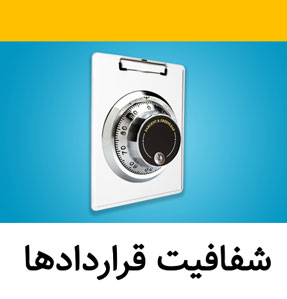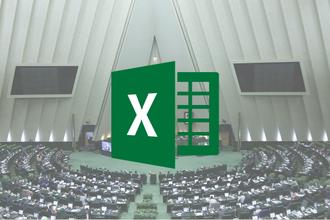|
حوزه شفافیت |
داده حکومتی باز |
Open Government Data |
Scope |
|
موضوع |
راهنما، آموزشی؛ ارائه گزارش، تجارب |
Learning, Educational, Experience, Report |
Subject |
|
جغرافیا |
بینالمللی |
International |
Geography |
|
نوع مطلب |
متنی |
Text |
Type |
|
زبان |
انگلیسی |
English |
Language |
|
منتشر کننده |
دانشگاه فناوری کوئینزلند، دانشکده حقوق |
Queensland University of Technology, Faculty of Law |
Publisher |
فایلی که معرفی میشود، یک پایان نامه دکتری در حوزه داده حکومتی باز و شفافیت و نقش آن در توسعه کشورهای در حال توسعه (و با بررسی خاص کشور قطر) میباشد. این پایاننامه حاوی مرور ادبیاتی بسیار مفید و غنی در حوزه مباحث مذکور، بطور ویژه در ادبیات آکادمیک بوده و از این حیث ارزشمند میباشد.
دریافت متن فایل پایاننامه:
چکیده و فهرست مطالب در ادامه مطلب
چکیده
Using the Internet, governments can gain huge benefits in terms of savings in their national expenditure, dissemination of public information, and provision of services in more efficient and effective ways than were previously possible. Consequently, e-Government has become a global phenomenon. Governments, both in the developed and developing world, are making significant investments in order to gain more efficient, open and interactive government. However, the general public’s acceptance of e-Government has lagged behind expectations. Governments worldwide are now embracing Web 2.0 technologies to increase the adoption of their e-Government systems, by further opening up their systems and transactions towards more transparent and participative government, through Open Government and Open Government Data initiatives.
This thesis investigates how Open Government Data (OGD) concepts and practices might be implemented in the State of Qatar, as a case study of developing countries, in order to achieve more transparent, effective and accountable government. This investigation begins with an examination of how governments in the developed world are using the Internet and information and communication technologies to disseminate government information and to open up their internal transactions for public scrutiny, and discusses the factors contributing to these developments. This is followed by an in-depth case study of OGD practices in the State of Qatar through examination and analysis of its current OGD initiative and direct interviews with the responsible government officials. The thesis concludes with recommendations for Qatar on how to enhance the accessibility and reusability of its OGD and implement successful and sustainable OGD systems and practices, thereby increasing government transparency and openness.
فهرست مطالب
Keywords 3
Abstract i
Table of Contents . ii
List of Figures . v
List of Tables . vi
Acknowledgments ii
CHAPTER 1: INTRODUCTION . 5
1.1 Overview 5
1.2 The Purpose of This Research . 6
1.3 Background 6
1.4 Key Concepts . 9
1.5 E-government . 11
1.5.1 What is meant by ‘e-Government’? 11
1.5.2 Chronology of e-Government . 13
1.5.3 Significance and Driving Factors . 15
1.5.4 Levels and Domains . 16
1.5.5 Benefits and promised outcomes 17
1.5.6 Examples of the direct benefits of e-Government 19
1.5.7 E-Government’s Challenges and Impediments. 21
1.5.8 E-government and the people: the lost link 26
1.5.9 Government and the real need to change to an open relationship with the people (‘Open Government’) . 28
1.5.10 User acceptance: the pivotal foundation for e-government success . 29
1.6 Open Government and Open Government Data (OGD) 31
1.6.1 G8 Open Data Charter 32
1.6.2 Web 2.0’s Effect on e-government . 33
1.7 Context of the research 35
1.8 Significance of the research . 36
1.9 Qatar’s e-government . 38
1.10 Research Problem 40
1.11 Method and Research Plan . 41
1.12 Thesis Outline 44
CHAPTER 2: THE SHIFT TOWARDS OPEN GOVERNMENT 47
2.1 The Open Access Movement . 47
2.2 Open government overview AND The priorities of Governments 49
2.3 Web 2.0, the new Social Media . 53
2.3.1 What is Web 2.0? 57
2.3.2 Web 2.0 characteristics . 59
2.3.3 Web 2.0 applications 61
2.3.4 Web 2.0 Technologies 64
2.4 The Current status of e-Government and the need for Open Government . 66
2.5 Countries Worldwide and the Shift towards ‘Openness’ and ‘Open Data’ 68
2.5.1 Critiques of ‘Open Data’ 71
2.6 The importance of transparency . 74
CHAPTER 3: THE BENEFITS OF OPENNESS AND OPEN DATA 76
3.1 Overview 76
3.2 Social Justice Theory . 76
3.3 Human Rights Theory 79
3.4 Knowledge Gap Theory . 81
3.5 Economic Theory . 82
3.6 Innovation Theory 85
3.7 Public Good Theory . 90
CHAPTER 4: OPEN GOVERNMENT IN DEVELOPED COUNTRIES 93
4.1 Overview 93
4.2 Open Government Data Success Model 94
4.3 Top Level Support . 96
4.3.1 United Kingdom . 96
4.3.2 United States . 105
4.4 Building Double-tier Digital Capacity (Civil-SOCIETY AND Government) . 109
4.4.1 United Kingdom . 109
4.4.2 United Sates 111
4.5 Web 2.0 Involvement (Government 2.0) . 113
4.5.1 Bottom-up Government 2.0 initiatives . 115
4.5.2 Macro-level Government 2.0 Projects 117
4.6 Legal Infrastructure 119
4.6.1 Knowledge society is not possible without Freedom of Access to Information . 120
4.6.2 From “Freedom of Information” to “Right to Information” . 122
4.7 Conclusion . 123
CHAPTER 5: OPEN GOVERNMENT IN THE STATE OF QATAR . 125
5.1 Overview 125
5.1.1 The Internet’s Impact in Developing Countries 126
5.1.2 Why Developing Countries, and Why Qatar? 127
5.2 Qatar’s e-Government 129
5.2.1 Low e-Government Adoption, a persistent problem . 131
5.3 Qatar’s Open Government Data . 133
5.4 QALM: Qatar’s Open Government Data Assessment . 135
5.4.1 The Current Presentation of Data in Qalm . 136
5.4.2 Key Driving Forces 139
5.4.3 Management Approach . 141
5.4.4 Key Challenges . 142
5.4.5 The Perception of Open Government Data (OGD) 144
5.4.6 Future Plans 145
5.5 Qatar’s Open Government Data success Model Analysis 145
5.5.1 Top Level Support 145
5.5.2 Digital Capacity (Civil-Society and Government) 148
5.5.3 Web 2.0 Involvement (Government 2.0) 150
5.5.4 Legal Infrastructure 154
5.6 Conclusion . 156
CHAPTER 6: CONCLUSION AND FINAL RECOMMENDATIONS 158
6.1 Overview 158
6.2 Civic Paricipation in Qatar – Potential Engagement with OGD 159
6.3 The Current Status Qatar’s Government Data and the way Forward - is (OGD) a NECESSITY or just an abstract good? 161
6.4 Thesis Recommendations 163
6.4.1 Recommendation 1: Development of an Open Government Data Strategy . 163
6.4.2 Recommendation 2: Formulation of an Open Government Data Framework 166
6.4.3 Recommendation 3: Development of a Legislative Framework for the Knowledge Society (The Legislation Gap) . 168
6.4.4 Recommendation 4: Building an Open Data Community 170
6.4.5 Recommendation 5: Strengthening the use of Web 2.0 Technologies . 172
6.5 Limitations of this Study AND Future Research . 175
6.6 Concluding Comments . 176
BIBLIOGRAPHY . 179







